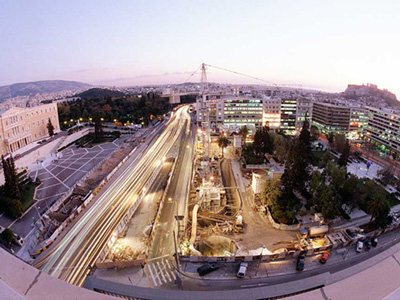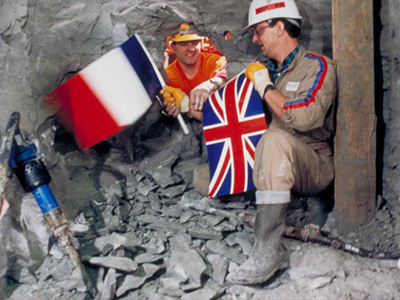The Channel Tunnel runs some 32 miles (51 kilometers) from a terminal near Folkestone on the English side to Calais in France. And, considering that the tunnel actually comprises three tunnels (one for travel in each direction with a service tunnel in between), crews undertook a lot more than 32 miles (51 kilometers) of tunneling…closer to a hundred (around 155 kilometers).
The privately financed project, which ultimately cost $14.7 billion, has made possible 500 undersea train trips a day at speeds reaching nearly 100 miles (160 kilometers) per hour.
Getting the Chunnel build back on track
The project to build the undersea leg between England and France began in earnest in 1986. But as work progressed, the owner, Eurotunnel, and the Anglo-French consortium responsible for design and construction, TransManche Link, were plagued by severe cost, schedule, and safety problems. By 1990, many feared that the project would never be completed.
Bechtel’s involvement began in 1987, a year after the project got the green light, by filling a key management role with a lone seconded executive. When it became clear that the project was at risk, Eurotunnel called on Bechtel to get the project back on track. Bechtel helped manage the project to its successful completion in 1994, providing management, technical, and construction expertise, which helped restore the trust of investors and financial institutions.
"The year 1990 proved pivotal in the turnaround of a once-beleaguered project. Our project team dug some 48 miles (77 kilometers) of tunnel—a world record."















